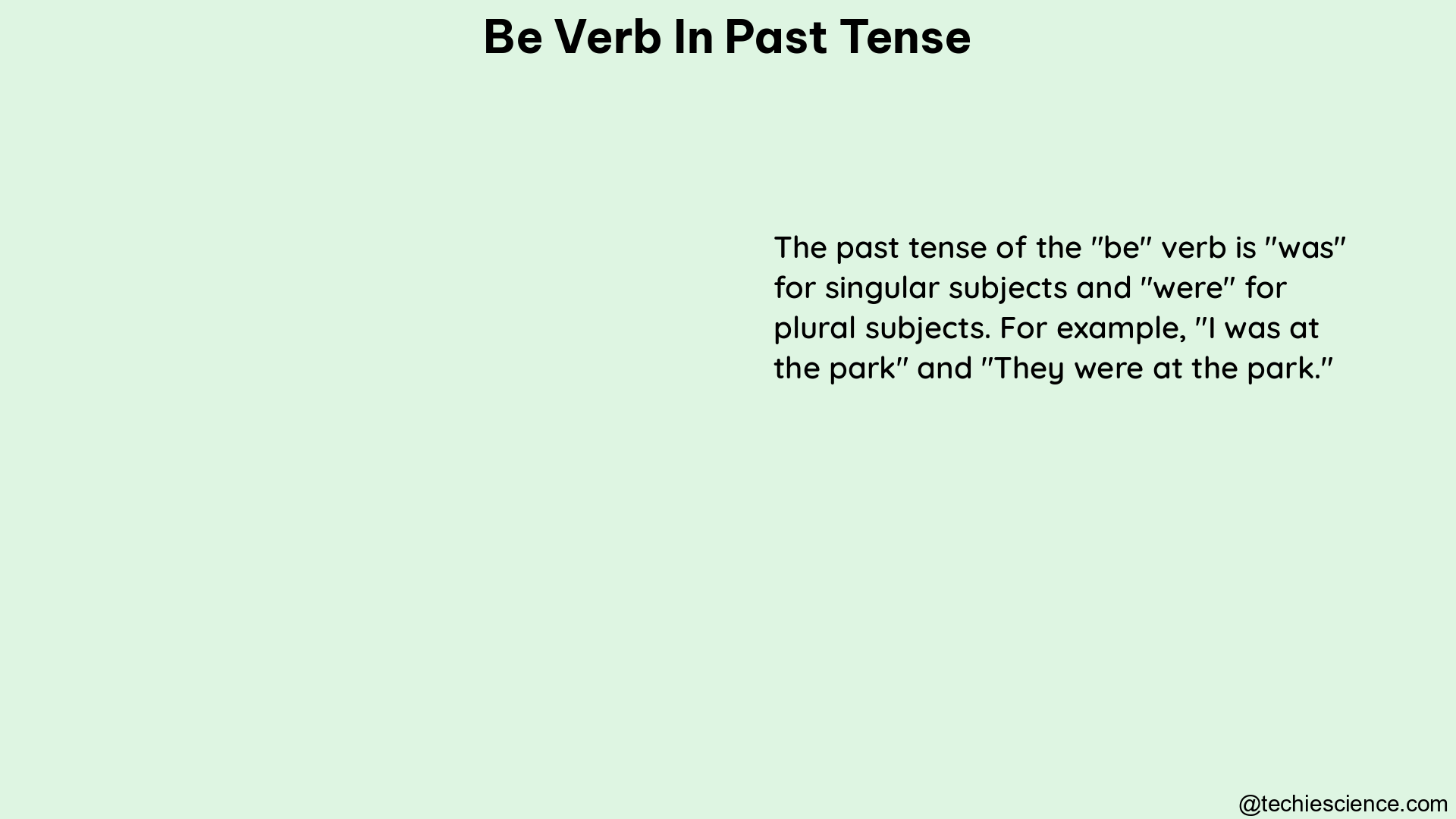The verb “to be” is one of the most fundamental and versatile verbs in the English language. When used in the past tense, it serves to describe situations or states that existed in the past. This comprehensive guide will delve into the grammatical specifications, examples, theoretical explanations, and advanced details surrounding the use of the past tense of the verb “to be.”
Grammatical Specification
The past tense of the verb “to be” follows a specific set of rules:
- Was is used for singular subjects (I, he, she, it).
- Were is used for plural subjects (you, we, they).
Here are some examples to illustrate the usage:
| Subject | Affirmative | Negative |
|---|---|---|
| I | I was at my gran’s house yesterday. | I was not late for school this morning. = I wasn’t late for school this morning. |
| He | She was with her friends last Saturday. | He was not at home last Saturday. = He wasn’t at home last Saturday. |
| We | We were happy yesterday. | We were not cold yesterday. = We weren’t cold yesterday. |
| It | It was sunny yesterday. | – |
| They | They were at the beach last weekend. | – |
Questions and Negatives

The past tense of the verb “to be” also follows specific rules when forming questions and negative statements:
Questions
- Were you tired this morning? Yes, I was.
- Was she at the park last Sunday? No, she wasn’t.
- Where was he yesterday?
Negatives
- I was not late for school this morning. = I wasn’t late for school this morning.
- He was not at home last Saturday. = He wasn’t at home last Saturday.
- We were not cold yesterday. = We weren’t cold yesterday.
Theoretical Explanation
The verb “to be” in the past tense is used to describe past situations or states. It is an irregular verb, meaning it has different forms for different tenses, unlike regular verbs that follow a consistent pattern.
The specific rules for using “was” and “were” are based on the subject of the sentence. “Was” is used for singular subjects, while “were” is used for plural subjects. This distinction helps maintain grammatical agreement and clarity in the sentence.
Additionally, the past tense of “to be” follows specific rules for forming questions and negatives, using the auxiliary verbs “did” and “not” respectively. These structures help convey the desired meaning and tone in the sentence.
Advanced Details
The past tense of the verb “to be” can also be used in more complex grammatical structures, such as the past continuous tense and the past perfect tense.
Past Continuous Tense
The past continuous tense is used to describe an ongoing action or state in the past. When using the verb “to be” in the past tense, the structure is:
– Subject + was/were + verb-ing
– We were watching TV when the earthquake started.
– She was being as polite as possible.
Past Perfect Tense
The past perfect tense is used to describe an action that was completed before another past action or event. When using the verb “to be” in the past tense, the structure is:
– Subject + had been + noun/adjective
– She had been a waitress for years before they promoted her to manager.
– I had forgotten the answer when I was taking the test.
Modal Verbs
The past tense of the verb “to be” can also be used in conjunction with modal verbs, which express possibility, necessity, or obligation. Examples include:
– I might be wrong.
– If you lived here, you would be home right now.
Reference

Hi…. I am Goutam Datta. I have completed a double M. A. in English and B. Ed. I am a creative writer. Currently, I am a part of the LambdaGeeks.